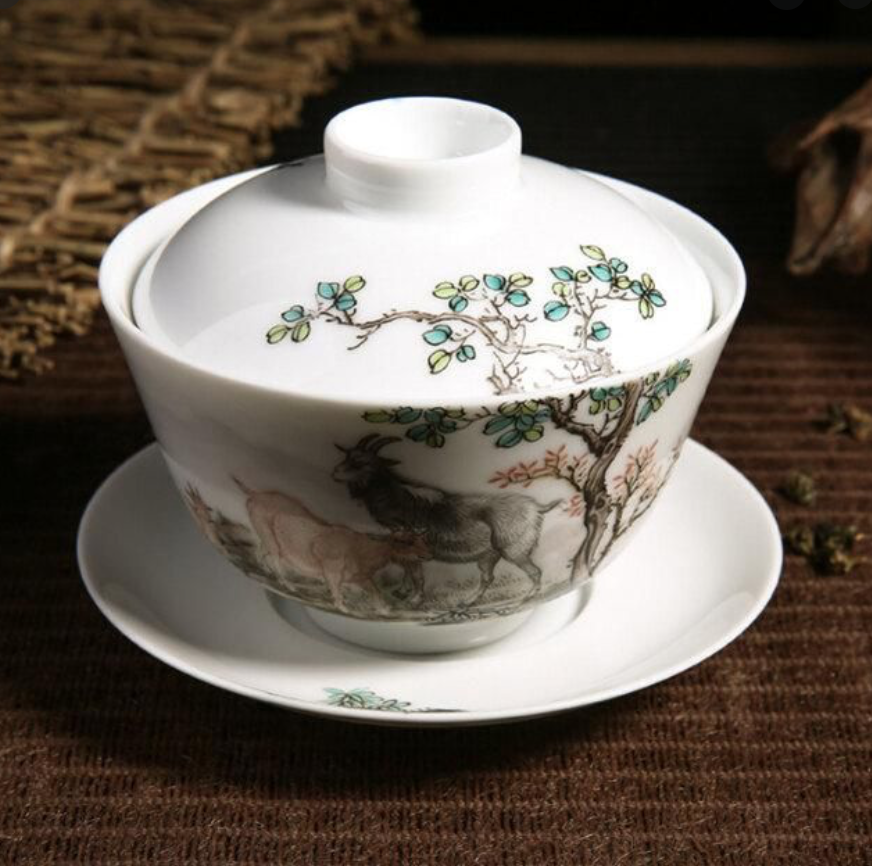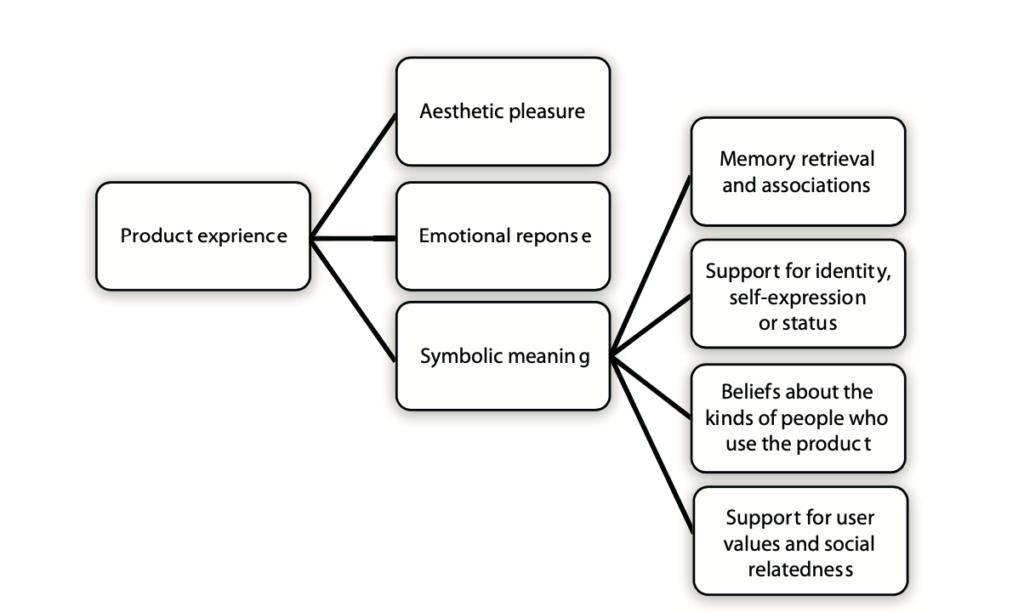Symbolic Meaning
As mentioned in my last blog post, symbolic meaning acts as one of the most important attributes of product attachment and can be considered as an important factor for positive design. For a better understanding I wanted to do further research on the term of symbolic meaning, outlined in the following text.
Symbolic meaning refers to the image and the associations that spring to mind in regard to a specific object/product. Objects can then act as symbols, providing personal meaning as well as communicating (the owner’s) personal characteristics to others. Those meaning that we attach to objects directly influence how we feel about objects and how we assess them. Researches developed various terms to describe this phenomenon of symbolic meaning, including meaning [1], personal meaning [2], symbolic meaning [3], product meaning [4], linking value [5] and symbolic qualities associated with products. [6]
Symbolic Meaning and User Experience
However, symbolic meaning has many dimensions and another concept strongly related with symbolic meaning is the user experience—user experience refers to the user’s perceptions and responses in regard to their interaction with a system or product (ISO 9241-110, 2010). That comes, because symbolic meanings and associations—dependent on personal interpretation—with a product seem to be an integral part of how users experience a product. Therefore the practice of user experience design has evolved to take into account more experiential aspects of user-product interaction, such as emotions, feelings and meanings. Nowadays many researchers agree that symbolic meaning acts as an important dimension of user experience.[7] Desmet and Heckert identify three levels of product experience [8]:
1) aesthetic pleasure
2) attribution of meaning
happens through cognitive processes such as interpretation, memory retrieval and associations
3) emotional response
Desmet and Heckert state that meaning is related to the personal or symbolic significance of products or the possibility of assigning them personality or other expressive. As an example they mention a Chinese teacup that one of the authors is attached to because it represents his visit to China.

Hassenzahl on the other hand does not explicitly mention symbolic meaning as a component of user experience, but he describes aspects that are closely related. He categorizes the hedonic aspect of user experience as including [9]:
1) stimulation—personal growth, an increase or knowledge and skills
2) identification—self-expression, interaction with relevant others
3) evocation—self-maintenance, memories
Especially identification as well as other hedonic aspects can be seen as part of symbolic meanings.
Symbolic Meaning and Appearance
Symbolic meaning can also be related to a product’s form, appearance and use—that is especially the case in literature linked to Industrial Design. Product semantics there get related to a concern for the cognitive meanings, symbolic functions and cultural histories of form. [10]
Van Rompay gives an overview of studies regarding the relationships between a product’s formal features and symbolic meaning. In his example the rounded form of an object is generally perceived as being secure or emotional. Van Rompay’s conclusion is that meaning is not a fixed property of the world or mind, but results from interactions between individual and environment. One of his studies shows that forms connote different symbolic meanings across cultures. [11]
Symbolic Meaning / Product Meaning and Product Attachment
Product attachment gets best represented by products that have some profound and sustained meaning for users [12]. Already in 1923, Ogden and Richards defined product meaning as the relationship between mind, object and world. Product meaning is generally seen as subjective, suffused with affectivity and usually either utilitarian or symbolic. It has also been stated that a group of individuals have a tendency to make similar inferences about a product, suggesting that symbolic meaning is culturally shared. Symbols are formed by cultural principles, which can be:
— norms
— values
— social categories
Sari Kujala states as example the American flag—the flag may symbolizes freedom or conservative American. [13]
In psychological and sociological literature it gets stated that individuals pay attention to object symbolism mainly because they want to express, maintain or enhance their self-concept—their identity and ideal image of themself. Sociological literature also gives examples of how symbolic meaning has been used to compensate for low self-esteem. [14] Zimmerman adds to sychological and sociological literature that people use products as self-extension—those product then act as an essential part of identity construction for a development of a coherent life story. [15] Mugge adds that people tend to develop a stronger attachment to products where they use them to express and maintain a unique personal identity. [16] In addition to identity, Allen shows by his survey studies that to some extent users form product preferences by evaluating whether their values are represented in product meanings. [17]
Symbolic Meaning and Postmodernity
In ethnosociology a new concept of thinking characterizing postmodernity constituted. Cova states that to satisfy their desire for community, modern individuals seek products and services less for their use value than for their linking value. Linking value results when a product facilitates and supports communion by providing a site, an emblem, the support for integration or recognition, and so forth. Cova states that “the postmodern individual can build an identity for themself with cultural symbols and all possible references (such as plays, exhibitions, films, and books, etc.). Linking value refers to product properties that cause users to experience a feeling of communion.[18] The same idea is presented in the consumer research literature. For example, Belk argues that identity is important not only on an individual level, but also on a collective level involving family group, subcultural and national identities. [19]
“[…] the literature of industrial design suggests that symbolic meaning can arise through memory retrieval and associations (Desmet & Hekkert, 2007) and seems to be one of the determinants of product attachment (Mugge et al., 2008; Schifferstein & Zwartkruis-Pelgrim, 2008). Consumer behavior research shows that symbolic meaning is important to users mainly because they want to maintain, enhance and express their identity and ideal image of themselves. It has been shown that symbolic meaning arises when products support user values (Allen, 2006). The sociological literature suggests that the goal can also be a feeling of communion (Cova, 1997).” —Kujala, S. / Nurkka, P.
Considering all the different definitions and fields of research there are various views of the concept of symbolic meaning. Symbolic meaning—one of the most important attributes of product attachment, especially happiness related symbolic meaning—is something intangible and subjective, but also culturally shared.

Sources
[1] Crilly, N., Good, D., Matravers, D., & Clarkson, P. J. (2008). Design as communication: Exploring the validity and utility of relating intention to interpretation. Design Studies, 29(5), 425-457.
[2] Cupchik, G. C., & Hilscher, M. C. (2008). Holistic perspectives on the design of experience. In H. N. J. Schifferstein & P. Hekkert (Eds.), Product experience (pp. 241-256). Amsterdam, the Netherland: Elsevier.
[3] Desmet, P., & Hekkert, P. (2007). Framework for product experience. International Journal of Design, 1(1), 57-66.
[4] Allen, M. W. (2002). Human values and product symbolism: Do consumers form product preference by comparing the human values symbolized by a product to the human values that they endorse? Journal of Applied Social Psychology, 32(12), 2475-2501
[5] Cova, B. (1997). Community and consumption, towards a definition of the “linking value” of product or services. European Journal of Marketing,31(3/4), 297-316.
[6] Kujala, S. / Nurkka, P. (2012). Sentence Completion for Evaluating Symbolic Meanin. URL: https://www.researchgate.net/publication/286834130_Sentence_Completion_for_Evaluating_Symbolic_Meaning
[7] ebda.
[8] Desmet, P., & Hekkert, P. (2007). Framework for product experience. International Journal of Design, 1(1), 57-66.
[9] Hassenzahl, M. (2003). The thing and I: Understanding therelationship between user and product. In M. Blythe, C. Overbeeke, A. F. Monk, & P. C. Wright (Eds.), Funology: From usability to enjoyment (pp. 31-42). Norwell, MA: Kluwer Academic.
[10] Kujala, S. / Nurkka, P. (2012). Sentence Completion for Evaluating Symbolic Meanin. URL: https://www.researchgate.net/publication/286834130_Sentence_Completion_for_Evaluating_Symbolic_Meaning
[11] van Rompay, T. J. L. (2008). Product expression: Bridging the gap between the symbolic and the concrete. In H. N. J. Schifferstein & P. Hekkert (Eds.), Product experience (pp. 333-351). Amsterdam, the Netherland: Elsevier.
[12] Mugge, R., Schoormans, J. P. L., & Schifferstein, H. N. J. (2008). Product attachment: Design strategies to stimulate the emotional bonding to products. In H. N. J. Schifferstein & P. Hekkert (Eds.), Product experience (pp. 425-440). Amsterdam, the Netherland: Elsevier.
[13] Kujala, S. / Nurkka, P. (2012). Sentence Completion for Evaluating Symbolic Meanin. URL: https://www.researchgate.net/publication/286834130_Sentence_Completion_for_Evaluating_Symbolic_Meaning
[14] Allen, M. W. (2002). Human values and product symbolism: Do consumers form product preference by comparing the human values symbolized by a product to the human values that they endorse? Journal of Applied Social Psychology, 32(12), 2475-2501.
[15] Zimmerman, J. (2009). Designing for the self: Making products that help people become the person they desire to be. In Proceedings of the 27th International Conference on Human Factors in Computing Systems (pp. 395-404). New York, NY: ACM.
[16] Mugge, R., Schoormans, J. P. L., & Schifferstein, H. N. J. (2008). Product attachment: Design strategies to stimulate the emotional bonding to products. In H. N. J. Schifferstein & P. Hekkert (Eds.), Product experience (pp. 425-440). Amsterdam, the Netherland: Elsevier.
[17] Allen, M. W. (2002). Human values and product symbolism: Do consumers form product preference by comparing the human values symbolized by a product to the human values that they endorse? Journal of Applied Social Psychology, 32(12), 2475-2501
[18] Cova, B. (1997). Community and consumption, towards a definition of the “linking value” of product or services. European Journal of Marketing,31(3/4), 297-316.
[19] Belk, R. W. (1988). Possessions and the extended self. Journal of Consumer Research, 15(2), 139-168.
[20] Kujala, S. / Nurkka, P. (2012). Sentence Completion for Evaluating Symbolic Meanin. URL: https://www.researchgate.net/publication/286834130_Sentence_Completion_for_Evaluating_Symbolic_Meaning